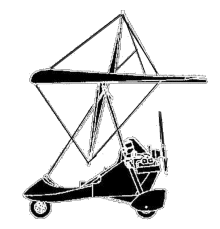
ASN Wikibase Occurrence # 249562
This information is added by users of ASN. Neither ASN nor the Flight Safety Foundation are responsible for the completeness or correctness of this information.
If you feel this information is incomplete or incorrect, you can submit corrected information.
| Date: | Monday 24 August 2020 |
| Time: | 18:00 UTC |
| Type: |  Mainair Blade 912 |
| Owner/operator: | Private |
| Registration: | G-CBJT |
| MSN: | 1302-1101-7-W1097 |
| Year of manufacture: | 2001 |
| Engine model: | Rotax 582-2V |
| Fatalities: | Fatalities: 0 / Occupants: 2 |
| Aircraft damage: | Destroyed |
| Category: | Accident |
| Location: | Otherton Airstrip, Micklewood Lane, Penkridge, Staffordshire -
 United Kingdom United Kingdom
|
| Phase: | Take off |
| Nature: | Training |
| Departure airport: | Otherton Airstrip, Penkridge, Staffordshire |
| Pound Green Airfield, Bewdley, Worcestershire | |
| Investigating agency: | AAIB |
| Confidence Rating: |
AAIB investigation to Mainair Blade, G-CBJT: Engine failure and forced landing after takeoff, Otherton Airfield, Penkridge, Staffordshire, 24 August 2020. The AAIB Final report was published on 8 April 2021, and the following is an ecerpt from it:
"The aircraft was taking off from Otherton Airstrip for a dual cross-country navigation exercise to Pound Green Airfield. The crew consisted of a student, who was also the aircraft owner, in the front seat and the instructor, as commander, in the rear seat.
The sortie plan was to depart Runway 25 at Otherton, with the student as PF, and climb in the overhead before commencing the cross-country route. The meteorological conditions were benign with good visibility, no cloud below 3,600 ft amsl and the wind was from 200 degrees at 3 knots.
During the takeoff roll and initial climb, engine temperatures were normal and there were no abnormal symptoms. After takeoff, the student made a left turn to a crosswind leg, avoiding overflying some ponds to reduce disturbance to people fishing.
The instructor stated that “The student made an early to port turn and the aircraft was flown to the left of the track which I normally encourage my students to follow in order to comfortably make the fields on the right of the crosswind leg in the event of an engine failure.”
However, the instructor did not correct the flightpath. The student believed he followed the line of the track as taught. Between approximately 90 and 150 ft agl, the aircraft suffered a marked power loss, and the instructor took control. In his view there was no option to land ahead and so he initiated a turn to the right, intending to land along the furrows of a potato crop in an adjacent field As the aircraft turned right, the intended approach path crossed a line of trees.
The instructor stated: “I commenced a turn between two trees with the intention of landing between them, but the skidding of the aircraft was drawing us nearer to the tree to port. I had to increase the rate of turn to avoid the tree and we lost height rapidly.” In doing so, he applied an angle of bank (AOB) of between 45° and 60⁰, with a consequent significant increase in the rate of descent.
The recollection of the impact sequence differed between the occupants. The student recalled the aircraft striking the ground while still banked to the right. The instructor recalled that, when he believed the aircraft would clear the tree, he levelled the wings at approximately 20 ft agl and then began to flare for landing.
As the aircraft struck the ground the landing gear dug in, decelerating the aircraft rapidly. Looking at the accident site later, the instructor believed the left wing struck the tree and caused the aircraft to yaw left. The instructor estimated that the aircraft only covered six metres during the impact sequence, and the time elapsed from engine failure to impact was approximately 15 seconds.
The aircraft came to rest pointing back towards the airfield, and the forward fuselage was badly damaged (Figure 2). The student suffered serious injuries, but the instructor suffered minor injuries and was able to extract himself from the aircraft. He asked some passers-by to call an ambulance and he remained with the student until the emergency services arrived to effect a rescue
AAIB Conclusion
The engine failed, for an unknown reason, at very low altitude. The instructor flew a right turn to attempt a forced landing in an adjacent crop field. The aircraft struck the ground and decelerated rapidly causing extensive damage. The student in the front seat was seriously injured."
Damage Sustained to Airframe:
Per the above AAIB report, the airframe was "Damaged beyond economic repair". The airframe was twenty years old, having been first registered on 12 December 2001.
Accident investigation:
 |
|
Sources:
1. AAIB Final Report: https://assets.publishing.service.gov.uk/media/604f43e8d3bf7f1d10e50592/Mainair_Blade_G-CBJT_04-21.pdf
2. https://abpic.co.uk/pictures/registration/G-CBJT
3. https://www.afors.com/index.php?page=adview&adid=12266&imid=0
4. https://www.afors.com/index.php?page=adview&adid=12266&imid=1
5. https://en.wikipedia.org/wiki/Pound_Green_Airfield
Media:
Mainair Blade G-CBJT post-accident 24 August 2020 (top right picture)
AAIB April Bulletin now publishedhttps://t.co/n5DZA9ix7v pic.twitter.com/yOCjIUQor5
— AAIB (@aaibgovuk) April 8, 2021
Revision history:
| Date/time | Contributor | Updates |
|---|---|---|
| 08-Apr-2021 22:27 | Dr. John Smith | Added |
| 08-Apr-2021 22:28 | Dr. John Smith | Updated [Embed code, Narrative] |
| 08-Apr-2021 22:28 | Dr. John Smith | Updated [Time] |
| 08-Apr-2021 22:29 | Dr. John Smith | Updated [Embed code] |
| 08-Apr-2021 22:32 | Dr. John Smith | Updated [Phase] |
| 08-Apr-2021 23:44 | Dr. John Smith | Updated [Narrative] |
| 09-Apr-2021 18:40 | harro | Updated [Accident report] |
Corrections or additions? ... Edit this accident description
The Aviation Safety Network is an exclusive service provided by:


 ©2024 Flight Safety Foundation
©2024 Flight Safety Foundation